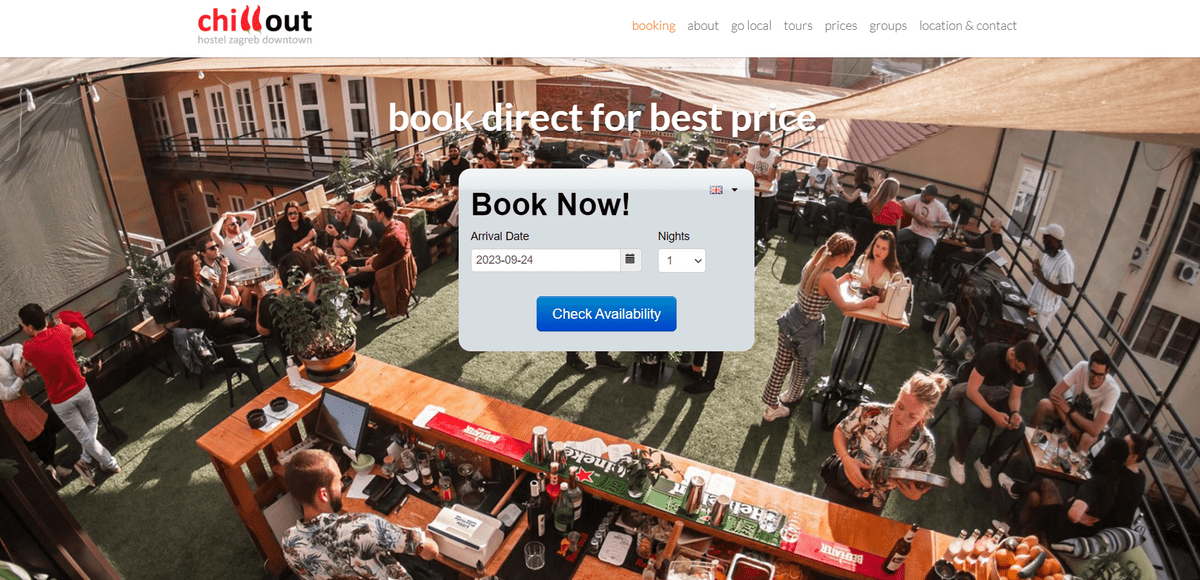Understanding The Different Facets Of Business Growth
Understanding The Different Facets Of Business Growth

Business growth is a vital aspect of any organization's long-term success. It signifies progress and opens up new opportunities for innovation, profitability, and market expansion. Understanding the different facets of business growth and exploring effective strategies can help businesses thrive in today's competitive landscape.
What is Business Growth
Business growth is crucial in sustaining and expanding a company's operations. By increasing revenue and market share, businesses can achieve economies of scale, attract new customers, and enhance their competitive advantage. Moreover, business growth enables organizations to invest in research and development, improve product offerings, and explore new markets.
In addition to the benefits mentioned above, business growth fosters innovation and encourages entrepreneurial spirit within an organization. As companies expand, they are more likely to invest in new technologies and processes, leading to advancements in their industry. Furthermore, pursuing growth often requires businesses to take calculated risks and embrace change, creating a culture of adaptability and resilience. Ultimately, sustained business growth drives financial success and fuels creativity and forward-thinking strategies that can propel a company into the future.
Understanding What is Business Growth
Business growth encompasses various dimensions that need to be considered for sustainable development. These include financial gain through increased sales and profitability, operational growth by streamlining processes for efficiency, market growth by expanding reach and customer base, and innovation-driven growth through continuous improvement and adaptation.
In addition to the dimensions mentioned above, another crucial aspect of business growth is the development of a strong brand identity. A well-defined and recognizable brand sets a company apart from its competitors and fosters customer loyalty and trust. By investing in branding initiatives such as logo design, consistent messaging, and memorable customer experiences, businesses can create a lasting impression in the minds of their target audience. A strong brand identity ultimately contributes to sustainable growth by attracting new customers, retaining existing ones, and differentiating the business in an increasingly competitive market.
Exploring Effective Strategies on How to Grow a Business
Developing a comprehensive strategy tailored to your organization's unique needs is essential to foster business growth effectively. This small business growth strategy should encompass setting clear goals and objectives, identifying target markets and customer segments, crafting a compelling value proposition, enhancing operational efficiency through technology solutions and data analytics, expanding market reach through marketing efforts and building strong customer relationships, nurturing innovation and adaptability within the company culture, as well as building a solid team by hiring top talent.
Understanding Small Business Growth
Image taken from Modern Life Seminars
Business growth increases a company's revenue and expands its operations over time. Businesses must understand the concept of business growth and its significance to thrive in today's competitive market. By implementing effective strategies, companies can achieve sustainable growth and long-term success.
What is Business Growth and Its Significance
Small business growth refers to the increase in a company's size, sales, profits, or market share over a specific period. It is an essential aspect of any small business growth, allowing organizations to reach new customers, explore new markets, and maximize their potential. With growth, companies can avoid stagnation and become obsolete in an ever-evolving market.
Key Indicators of Small Business Growth
Key indicators can help businesses measure their growth progress and identify areas for improvement. These indicators include revenue growth, customer acquisition rate, market share expansion, increased profitability, and enhanced brand recognition. By monitoring these metrics regularly, businesses can assess their performance and make informed decisions to fuel further growth.
Monitoring fundamental indicators is essential for businesses to stay competitive in today's dynamic market. By analyzing revenue growth, companies can identify which products or services drive their success and allocate resources accordingly. Additionally, tracking customer acquisition rates allows businesses to understand their customer base better and tailor their marketing strategies to attract more potential clients. Market share expansion is another crucial indicator, as it indicates a company's ability to outperform competitors and gain a more significant portion of the market. Increased profitability signifies financial success and enables businesses to reinvest in innovation and further expansion. Lastly, enhanced brand recognition is vital for attracting new customers and building customer loyalty. By consistently monitoring these indicators, businesses can stay ahead of the curve and make strategic decisions that propel their growth trajectory.
The Role of Market Analysis in Business Growth
Market analysis is vital in understanding the external factors that impact business growth opportunities. Businesses can identify untapped markets or niches that align with their strengths and capabilities by analyzing market trends, customer preferences, competitor strategies, and industry dynamics. This information helps them develop targeted marketing campaigns and tailor their products or services to meet customer demands effectively.
Incorporating Strikingly into your business growth strategy can significantly enhance your online presence through its user-friendly website builder platform.
Developing a Business Growth Strategy
Image taken from Miss Falcon
1. Setting Clear Goals and Objectives
It is crucial to set clear goals and objectives to achieve business growth. These goals should be specific, measurable, attainable, relevant, and time-bound (SMART). By having well-defined goals, you can master how to grow a business and focus your efforts and resources toward achieving them. For example, if your goal is to increase revenue by 20% next year, you can develop strategies and tactics aligned with this objective. Setting clear goals also helps track progress and make necessary adjustments along the way.
In addition to setting clear goals, it is equally important to assess and analyze market trends and competitors regularly. You can identify potential opportunities and adapt your strategies by staying informed about industry developments. This proactive approach allows you to stay ahead of the competition and make informed decisions that contribute to the overall growth of your business. Remember, being flexible and responsive in today's fast-paced business landscape is critical to sustainable development.
2. Identifying Target Markets and Customer Segments
Another critical aspect of developing a business growth strategy is identifying your target markets and customer segments. Understanding who your customers are and what they want allows you to tailor your products or services to meet their needs effectively. Conduct market research to gather insights about your target audience's demographics, preferences, behaviors, and purchasing power. This information will help you create targeted marketing campaigns that resonate with your customers and attract new ones.
In addition to identifying target markets and customer segments, staying updated on industry trends and competitor analysis is crucial. By keeping a close eye on market dynamics, you can anticipate changes in consumer demands and adapt your business growth strategy accordingly. This proactive approach allows you to stay ahead of the competition and position your products or services as innovative solutions that meet the evolving needs of your customers. Staying informed and agile in today's fast-paced business landscape is critical to sustaining long-term growth and success.
3. Crafting a Unique Value Proposition
To differentiate yourself from competitors and attract customers, crafting a unique value proposition (UVP) is essential. A UVP communicates the fantastic benefits or advantages customers can expect from choosing your products or services over others in the market. Your UVP should clearly articulate what sets you apart from the competition and why customers should choose you. It could be based on quality, price, convenience, innovation, or customer service. A compelling UVP helps build brand loyalty and drives business growth.
Developing a solid business growth strategy is vital for long-term success. By setting clear goals and objectives, identifying target markets and customer segments, and crafting a unique value proposition, you can position your business for growth and stand out. Implementing these strategies, enhancing operational efficiency, expanding market reach, nurturing innovation and adaptability, and building a solid team will help your small business thrive in a competitive landscape. Embrace the growth opportunities and strive to improve to achieve sustainable success continuously.
Enhancing Operational Efficiency
Image taken from Lever & Bloom
To effectively master how to grow a business, companies must enhance their operational efficiency. Organizations can optimize their operations and make informed decisions by streamlining business processes, implementing technology solutions, and leveraging data and analytics.
1. Streamlining Business Processes for Growth
Streamlining business processes is essential for maximizing productivity and minimizing inefficiencies. This involves identifying bottlenecks, eliminating unnecessary steps, and automating repetitive tasks. By improving workflow and reducing manual errors, businesses can save time and resources, allowing them to focus on core activities that drive growth.
In today's fast-paced business environment, streamlining processes is more crucial than ever. By embracing technology and implementing efficient systems, companies can increase productivity and stay ahead of the competition. Streamlining processes allows businesses to adapt quickly to changing market demands, improve customer satisfaction, and drive revenue growth. With the right tools and strategies, organizations can unlock their full potential and achieve sustainable success in the ever-evolving business landscape.
2. Implementing Technology Solutions for Efficiency
Embracing technology is critical to improving operational efficiency. Companies can automate tasks, enhance team communication and collaboration, and streamline data management processes by adopting software solutions tailored to business needs. From customer relationship management systems to enterprise resource planning software, technology enables businesses to operate more efficiently in a digital age.
In addition to improving operational efficiency, embracing technology allows businesses to stay competitive in today's fast-paced market. By leveraging advanced analytics and data-driven insights, companies can make more informed decisions and identify new growth opportunities. Furthermore, technology empowers organizations to adapt quickly to changing customer demands and market trends, ensuring long-term success in an increasingly digital landscape.
3. Leveraging Data and Analytics for Informed Decision Making
Data has become an invaluable asset in today's business landscape. Organizations can gain insights into customer behavior, market trends, and operational performance by collecting and analyzing relevant data points. This enables informed decision-making that aligns with business growth objectives. Leveraging data analytics tools empowers businesses to identify opportunities for improvement, optimize strategies, and make data-driven decisions that lead to sustainable growth.
By enhancing operational efficiency through streamlining processes, implementing technology solutions, and leveraging data analytics tools effectively, businesses can position themselves for long-term success in a competitive market environment.
Expanding Market Reach
Image taken from Hayashida Rice
To achieve business growth, it is crucial to expand your market reach. This involves investing in marketing and advertising, building strong customer relationships, and exploring new markets and opportunities.
1. Investing in Marketing and Advertising
Investing in marketing and advertising is essential for reaching a wider audience and increasing brand awareness. By utilizing various marketing channels such as social media, email marketing, content marketing, and paid advertising, businesses can effectively promote their products or services to potential customers.
Strikingly, a leading website builder platform, offers powerful tools for creating stunning websites that attract customers and drive conversions. With Strikingly's user-friendly interface and customizable templates, businesses can easily showcase their offerings and engage their target audience.
2. Building Strong Customer Relationships
Building strong customer relationships is crucial for business growth. Businesses can foster loyalty and encourage repeat purchases by providing exceptional customer service. This can be achieved through personalized communication, prompt responses to inquiries or concerns, and offering incentives or rewards programs to valued customers.
Strikingly understands the importance of customer relationships in business growth. Their platform allows businesses to integrate live chat functionality on their websites, enabling real-time customer interaction. This helps build trust and enhances the overall user experience.
3. Exploring New Markets and Opportunities
Expanding into new markets is another effective strategy for business growth. You can tap into new customer bases and increase revenue streams by identifying untapped markets or niche segments that align with your product or service offerings.
With Strikingly's global reach, businesses can explore new markets domestically and internationally. Their multi-language support feature enables enterprises to create localized versions of their websites to cater to different regions, thus expanding their market reach and attracting a diverse customer base.
Expanding market reach is vital for business growth. By investing in marketing and advertising, building strong customer relationships, and exploring new markets and opportunities with platforms like Strikingly, businesses can effectively expand their reach and achieve long-term success.
Nurturing Innovation and Adaptability
Image taken from Sourdough Against the System
To achieve sustainable business growth, it is crucial to nurture innovation and adaptability within your organization. This involves fostering a culture that encourages creative thinking, embracing change, and continuously seeking improvement.
1. Encouraging a Culture of Innovation
Creating an environment that fosters innovation is essential for business growth. Encourage your team to think outside the box and develop new ideas that can drive your business forward. Provide opportunities for brainstorming sessions, where employees can freely share their thoughts and collaborate on innovative solutions. By promoting a culture of innovation, you can stay ahead of the competition and uncover new growth opportunities.
2. Embracing Change and Adaptability
In today's rapidly evolving business landscape, embracing change and adapting to new market trends is essential. Be open to exploring different strategies and approaches that can help your business grow. This may involve adapting your products or services to meet customer needs or adopting new technologies to streamline operations. By embracing change and adaptability, you can position your business for long-term success in an ever-changing marketplace.
3. Seeking Continuous Improvement
Continuous improvement is critical to sustaining business growth. Regularly assess your processes, systems, and performance metrics to identify areas for improvement. Encourage customer and employee feedback to gain valuable insights into how you can enhance your products or services. Implementing a culture of continuous improvement allows you to stay agile in a competitive market and constantly refine your strategies for optimal growth.
Building a Strong Team
Image taken from Chillout
Building a solid team is crucial for business growth. It involves hiring and retaining top talent, investing in employee development and training, and fostering a positive work environment and company culture.
1. Hiring and Retaining Top Talent
To drive business growth, hiring and retaining top talent is essential. This starts with attracting qualified candidates through effective recruitment strategies such as job postings on relevant platforms or leveraging professional networks. Additionally, conducting thorough interviews and assessments can help identify individuals with the skills, experience, and cultural fit needed for the organization.
Once top talent is onboarded, it is essential to have strategies in place to retain them. Offering competitive compensation packages, providing opportunities for career advancement, and creating a supportive work environment are key factors contributing to employee satisfaction and retention.
2. Investing in Employee Development and Training
Investing in employee development and training is vital for business growth as it enhances the skills and knowledge of the workforce. Employees can stay updated with industry trends and best practices by providing ongoing training programs, workshops, or seminars. This boosts their individual performance and contributes to overall organizational success.
Furthermore, offering opportunities for professional development shows employees that their growth is valued within the company. This can include mentorship programs or sponsoring further education or certifications related to their roles.
3. Fostering a Positive Work Environment and Company Culture
Creating a positive work environment and fostering a strong company culture are essential for team cohesion and productivity. A positive work environment promotes open communication, collaboration, trust, and mutual respect among team members.
To foster this environment, leaders should encourage teamwork through team-building activities or regular meetings to discuss progress or challenges faced by the team. Additionally, recognizing achievements through rewards or incentives can boost morale within the organization.
A strong company culture aligns employees with shared values, goals, and beliefs, contributing to business growth. This can be achieved by clearly defining the company's mission and values and communicating them effectively throughout the organization.
Master How to Grow a Business & Build a Website With Us!
To learn how to grow a business, business owners must embrace the concept of business growth. Businesses can stay competitive in today's dynamic market by continuously striving to expand and improve. Implementing effective strategies and surviving adaptability are critical factors in achieving sustainable growth.
A dynamic business growth strategy is essential for businesses looking to thrive in a rapidly changing environment. This involves setting clear goals and objectives, identifying target markets and customer segments, and crafting a unique value proposition that sets your business apart. You can ensure your business is always moving forward by constantly evaluating and adjusting your strategy.
For small businesses, standing out from the competition is crucial for growth. One way to do this is by utilizing Strikingly, a website builder that allows you to create stunning websites that capture attention and engage customers. With its user-friendly interface and customizable templates, Strikingly empowers small businesses to showcase their unique offerings and attract new customers.
By incorporating these strategies into your business growth plan, you can position your company for success in today's competitive landscape. Remember to continuously innovate, adapt to change, nurture a strong team, and invest in marketing efforts. With dedication and the right approach, your business can achieve sustainable growth for years.
Want to know more about website building and e-commerce? Chat with us today!






